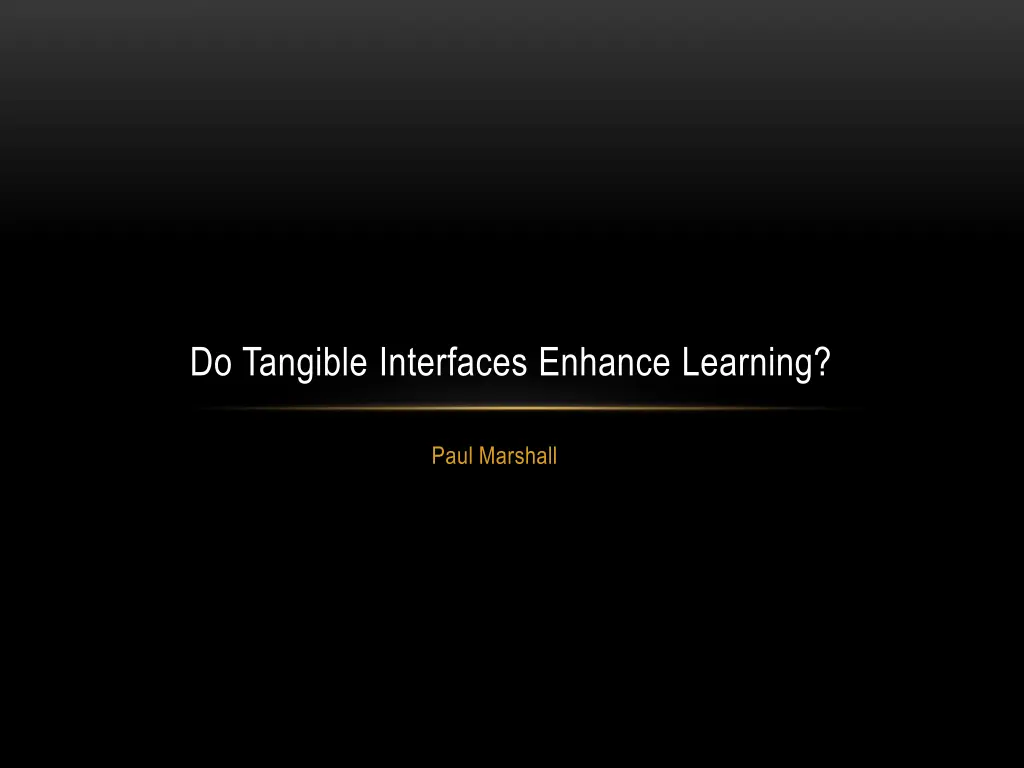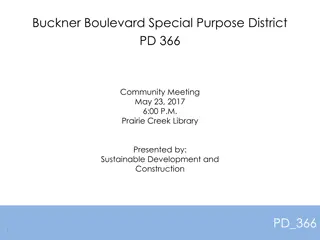
Tangible Interfaces in Learning: Enhancing Education with Hands-On Experience
Explore the impact of tangible interfaces on learning, focusing on hands-on experiences in education. Learn about the benefits, primary learning domains, and the integration of physical and digital elements. Discover the potential and challenges associated with tangible interface learning through various perspectives and research insights.
Download Presentation

Please find below an Image/Link to download the presentation.
The content on the website is provided AS IS for your information and personal use only. It may not be sold, licensed, or shared on other websites without obtaining consent from the author. If you encounter any issues during the download, it is possible that the publisher has removed the file from their server.
You are allowed to download the files provided on this website for personal or commercial use, subject to the condition that they are used lawfully. All files are the property of their respective owners.
The content on the website is provided AS IS for your information and personal use only. It may not be sold, licensed, or shared on other websites without obtaining consent from the author.
E N D
Presentation Transcript
Do Tangible Interfaces Enhance Learning? Paul Marshall
Learning with Tangibles A tangible user interface is one in which interaction with a system is done in a physical way. It is a generally accepted idea that hands-on work in a field of study will significantly improve education. The largest target audience is children.
Six Perspectives on Learning with Tangibles Possible learning benefits Typical learning domain Exploratory and expressive activity Integration of representations Concreteness and sensory directness Effects of physicality
Primary Learning Domains Narratives Programming Molecular biology and chemistry Dynamic systems
Bringing the Physical and Digital Together There must be a happy median. Mixture of concrete and abstract representations can be a beneficial pairing. Physical activity and cognitive activity work together. Recent studies tend towards an opinion that tangible systems support and further learning.
Tangible Weaknesses Empirical studies contrasting tangible and intangible learning are rare. Some of the few comparisons have reported no difference with children. Without actual benefits, physical interfaces are merely wasted space. More evidence is crucial to furthering tangible interface learning
Works Cited Paul Marshall. 2007. Do tangible interfaces enhance learning?. In Proceedings of the 1st international conference on Tangible and embedded interaction (TEI '07). ACM, New York, NY, USA, 163-170. DOI=10.1145/1226969.1227004 http://doi.acm.org/10.1145/1226969.1227004

